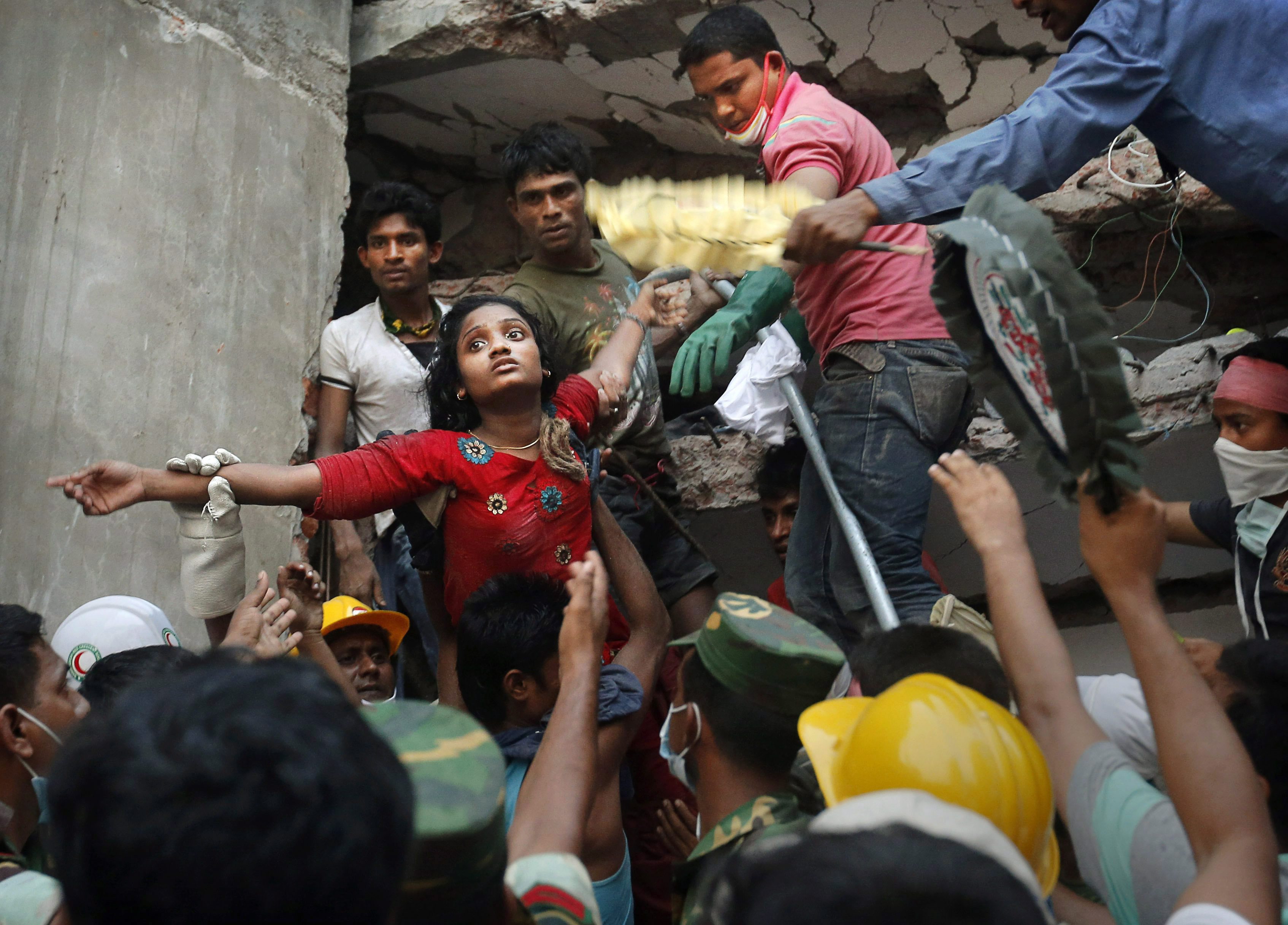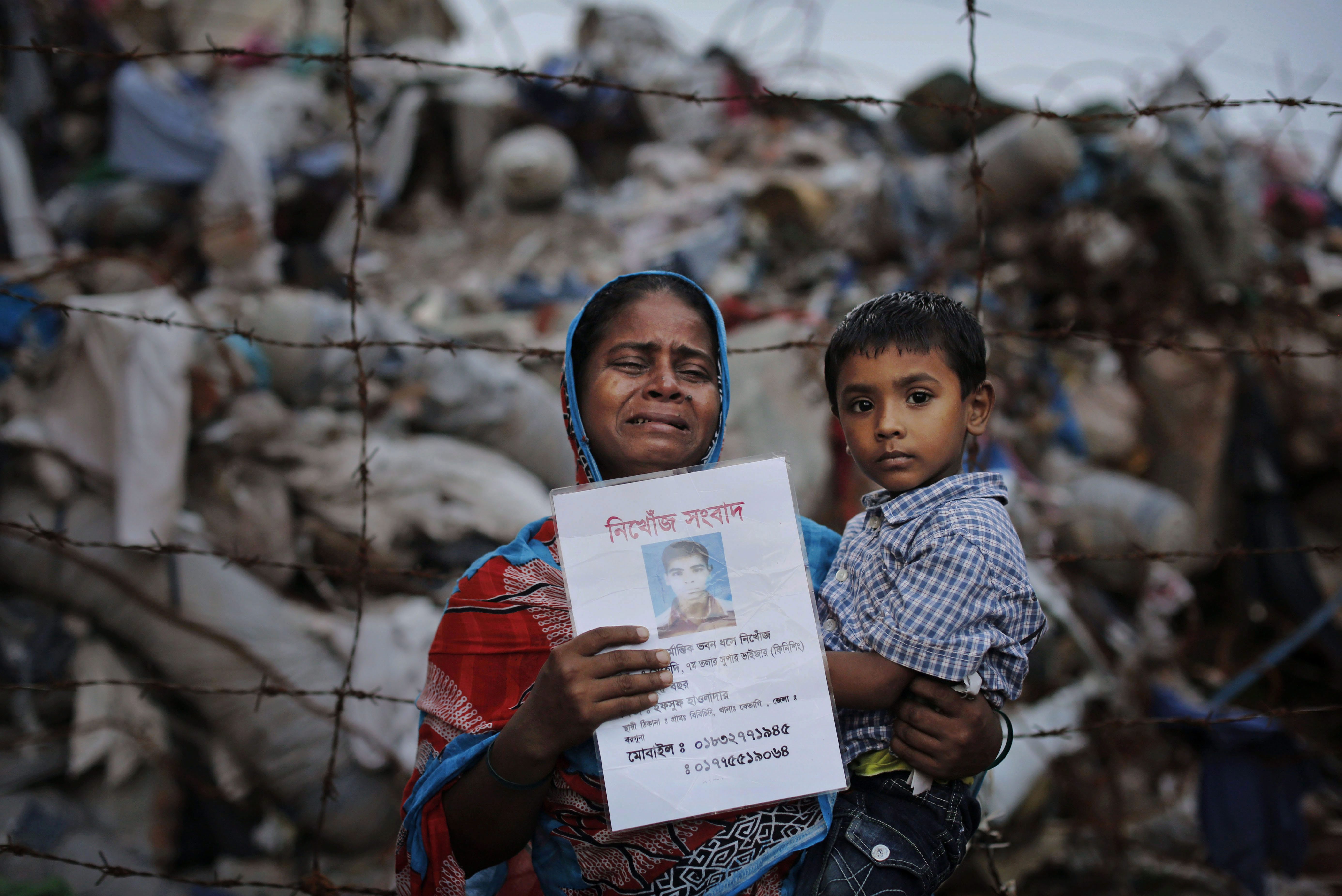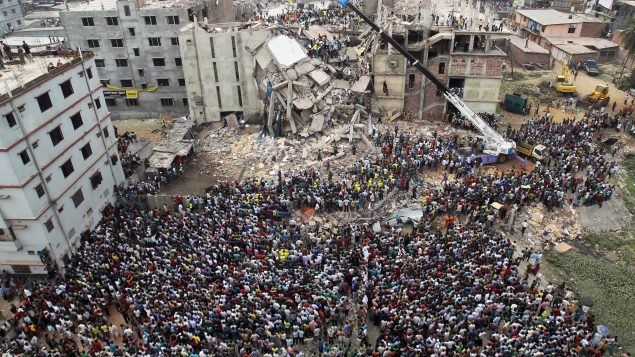Two retail company initiatives have led to much improved safety conditions in some clothing factories in Bangladesh but a new report suggests more should be done. Canadian companies like Loblaw, Hudson’s Bay and YM Inc. were central to the initiatives that put pressure on factory owners after the Rana Plaza factory collapse killed 1,134 workers and injured over 2,500 others in April 2013.

On April 25, 2013, people worked hard to rescue survivors from the rubble of the Rana Plaza garment factory building. (Kevin Frayer/AP Photo/file)
Multiple failures led to disaster
Paul Barrett, deputy director of The Center for Business and Human Rights at New York University says this disaster was among several factory accidents with multiple causes.
“You had a failure to regulate or oversee garment factories. You had a lot of corruption which undercut whatever regulation was taking place. And you had irresponsibility by factory owners who didn’t invest in safety precautions and instead used substandard materials, poor designs, put their factories in buildings that were not designed to house industrial activity,” said Barrett.
“And when you mix all those things together you ended up with a series of fires and building collapses over a period of years that culminated in the Rana Plaza disaster.”

Paul Barrett co-authored the report entitled “Five Years After Rana Plaza.”
Brands, retailers demanded improvements
After photos of the disaster circulated around the world, several companies which had sourced product from Rana Plaza launched the two initiatives. They put together funds for factory inspections and to compile lists of necessary safety improvements. That produced tangible results.
“These initiatives which were formed by western clothing brands and retailers turned to the factory owners and said ‘you must complete these steps to make your factories safer or we will not do business with you anymore,’” noted Barrett. “So, a factory stood to lose all of its western business—Europe, North America—if it didn’t comply. And that pressure applied had a good effect causing things to change.”

On June 14, 2013, a Bangladeshi woman hold a picture of her son who was a garment worker and was missing after the collapse of the Rana Plaza building. Images like this prompted action. (Kevin Frayer/AP Photo/file)
Pressure yielded results
The report shows that pressure made a difference in about 2,300 factories where safety has improved for some two million workers. But it notes there are other factories in Bangladesh that were not affected by this initiative and remain unsafe. Some supply Asian countries. Others are smaller and fly under the radar.
A call for an international effort
So, the report recommends the creation of a Bangladeshi-led international task force focused on “shared responsibility” for factory safety. It calls for funding from the brands and retailers that profit from Bangladeshi apparel, governments whose citizens purchase inexpensive clothing made in the country, international financial institutions, and the philanthropic community so that “the task force can start to make all factories safer.”







For reasons beyond our control, and for an undetermined period of time, our comment section is now closed. However, our social networks remain open to your contributions.